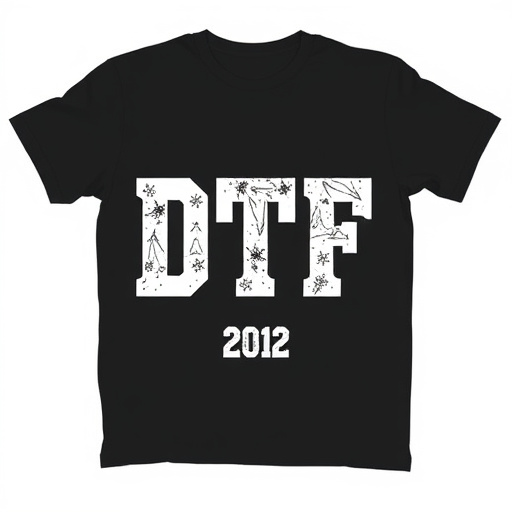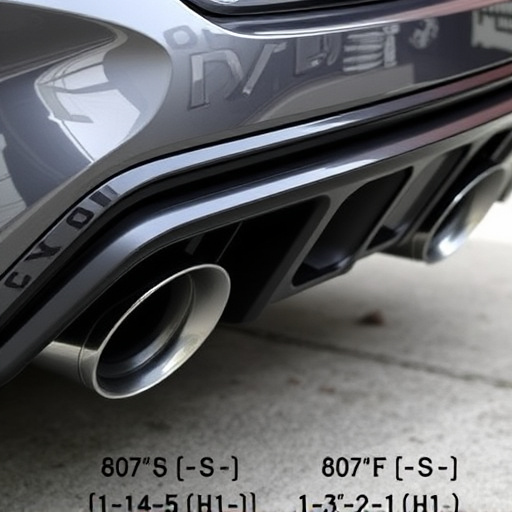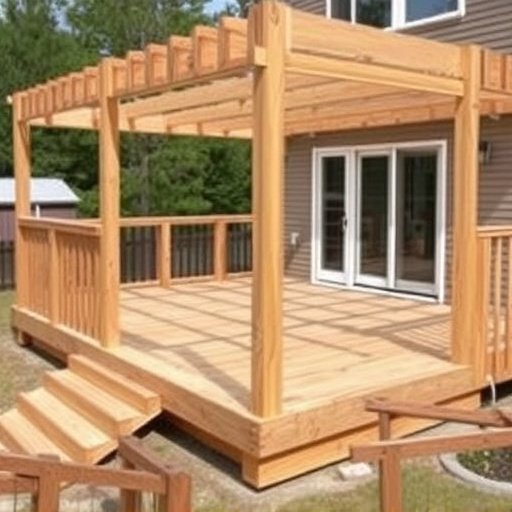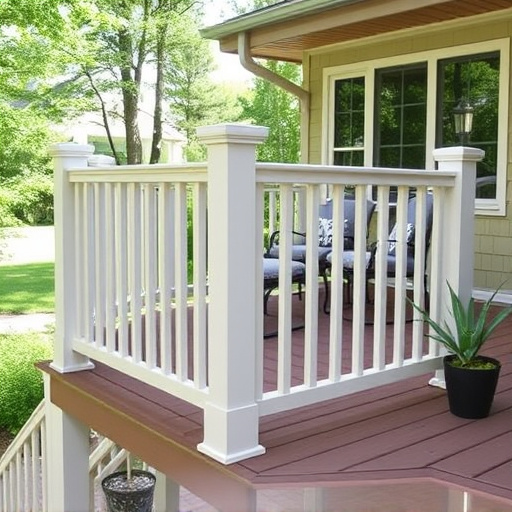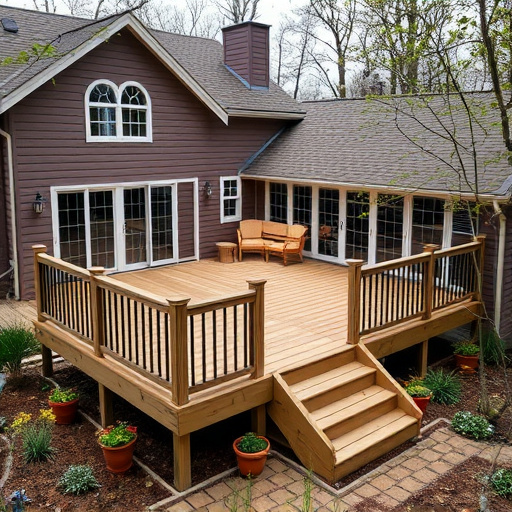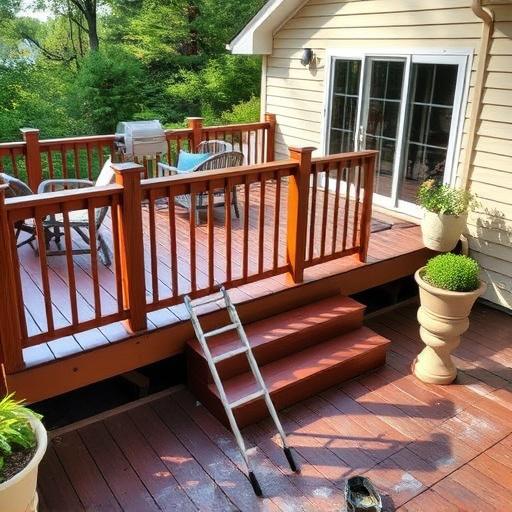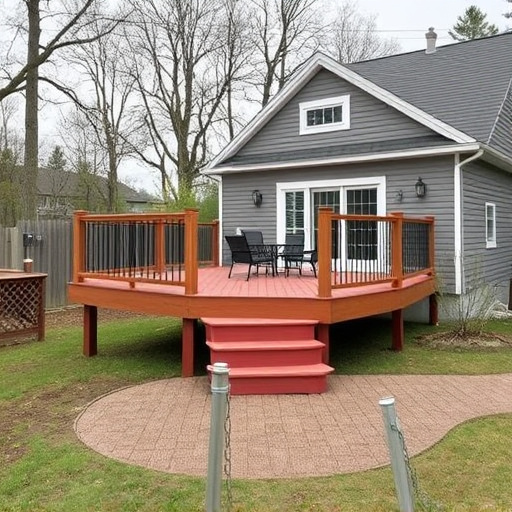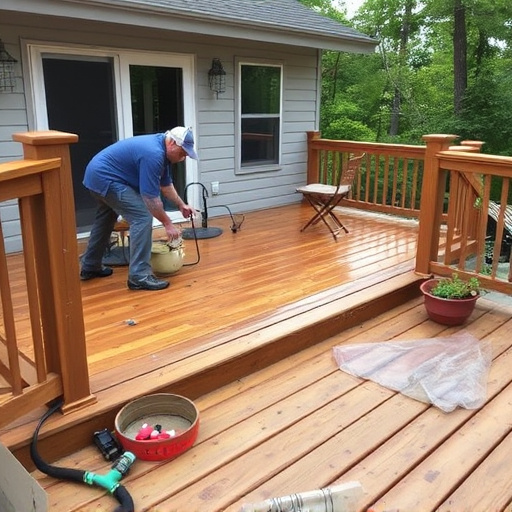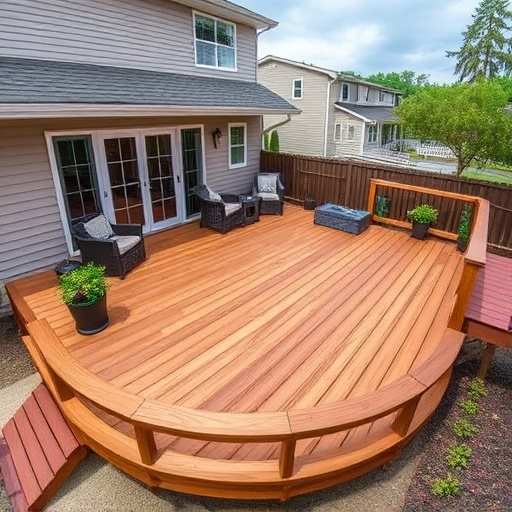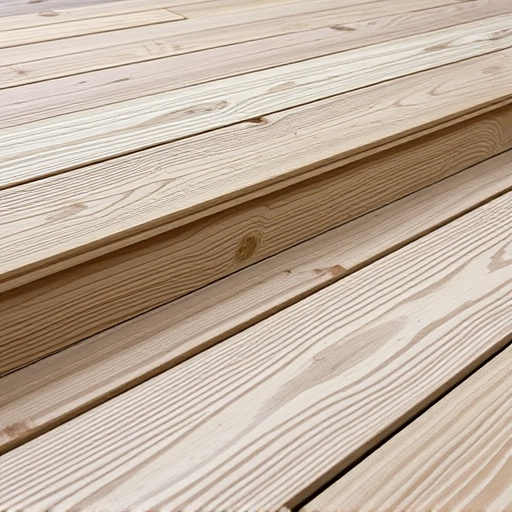Choosing the right deck materials is key to maintaining weather resistance and aesthetics. Consider composition, durability, mold resistance, fading prevention, and maintenance. Popular options include composite decking, treated lumber, and vinyl, each with unique benefits. Consult professionals for guidance based on climate and aesthetics. Prevent mold in humid areas with moisture-resistant materials and regular cleaning. Choose fade-resistant colors with UV protection for long-term aesthetic value.
“Elevate your outdoor space with a durable deck that stands up to the elements. This comprehensive guide explores the best deck materials designed to resist weather, mold, and fading. From understanding the latest innovations in weather-resistant decking to selecting colors that retain vibrancy, we empower you to make informed choices. Learn about effective mold prevention strategies specifically tailored for outdoor decks, ensuring a long-lasting and low-maintenance sanctuary. Discover the secrets to a robust, aesthetically pleasing deck environment.”
- Understanding Weather Resistant Deck Materials
- Mold Prevention in Outdoor Decks
- Choosing Colors That Resist Fading
Understanding Weather Resistant Deck Materials
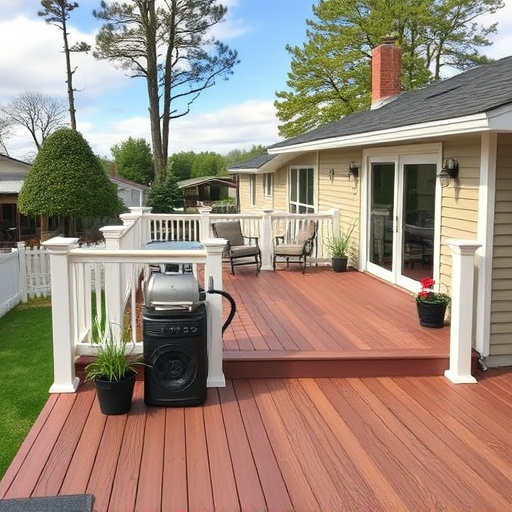
When it comes to deck materials that withstand the elements, understanding the key factors that contribute to weather resistance is essential. These materials are designed to resist deterioration from rain, snow, sun exposure, and extreme temperatures, ensuring your deck remains sturdy and aesthetically pleasing for years. The right choice can prevent costly roof repair and home exterior services while enhancing the curb appeal of your property.
One of the primary considerations for weather-resistant deck materials is their composition. Composite decking, for instance, offers superior durability as it’s made from a blend of wood fibers and plastic, which helps to inhibit mold growth and reduce fading. Other options include treated lumber, known for its natural resistance to rot and insects, and vinyl decking that provides a low-maintenance solution, withstanding harsh weather conditions without warping or cracking. Home service solutions specializing in deck construction can guide you in selecting the ideal material based on your climate and aesthetic preferences.
Mold Prevention in Outdoor Decks
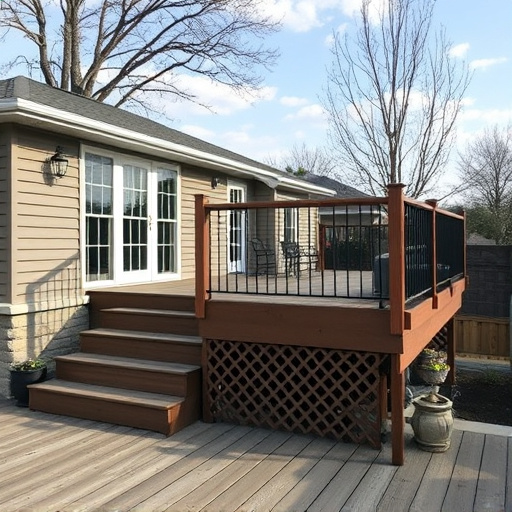
Outdoor decks are susceptible to mold growth, especially in humid climates or environments with frequent moisture. To prevent this issue, it’s crucial to choose deck materials that offer superior water resistance and breathability. Treated wood, composite decking, and certain types of vinyl are popular options known for their ability to withstand moisture without promoting mold development. These materials have added chemicals or coatings that inhibit the growth of fungi and bacteria, ensuring a longer-lasting deck surface.
Regular cleaning and maintenance also play a significant role in mold prevention. Removing debris and dirt from the deck’s surface can hinder the accumulation of moisture, creating an environment unfriendly to mold spores. Professional siding or roof replacement services can further enhance exterior home improvements by offering additional protection against moisture intrusion, thus reducing the risk of mold formation on your deck.
Choosing Colors That Resist Fading
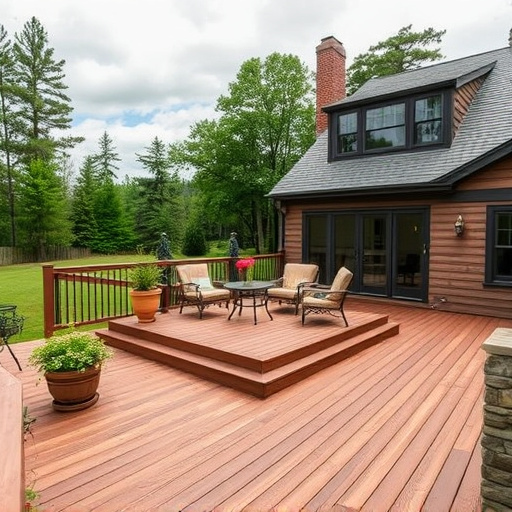
When selecting deck materials that can withstand the elements, choosing colors that resist fading is a strategic move to ensure your deck maintains its aesthetic appeal over time. Opting for fade-resistant hues can prevent the need for frequent repairs or replacements, which are often costly and time-consuming. This is particularly important for residential roofing and siding replacement, where a long-lasting finish can significantly reduce maintenance needs.
Deck materials exposed to sunlight, rain, and varying temperatures are prone to fading. Therefore, choosing colors that offer excellent UV protection is key. Certain pigments and coatings are designed to absorb and reflect ultraviolet (UV) rays, minimizing the effect of sun damage. Additionally, some manufacturers incorporate advanced technologies that enhance color stability, ensuring your deck looks as good as new for years to come, even after dealing with storm damage repairs.
When selecting deck materials, prioritizing weather resistance, mold prevention, and fade resistance ensures a durable and low-maintenance outdoor space. By understanding the best options available, from composite decking to specialized paints, you can create a beautiful deck that stands the test of time and harsh weather conditions. Choosing the right materials is key to enjoying your deck for years to come without constant upkeep.

